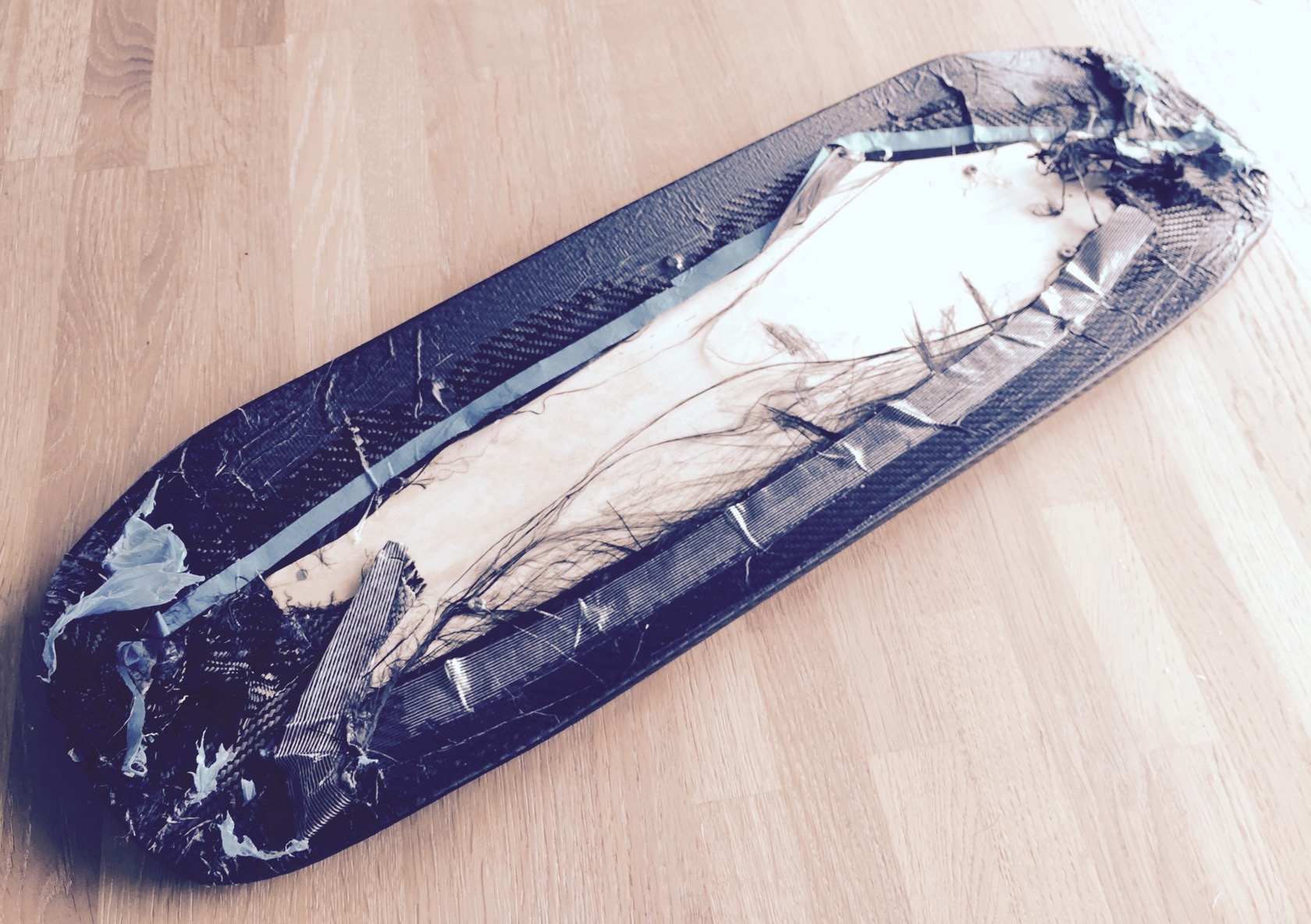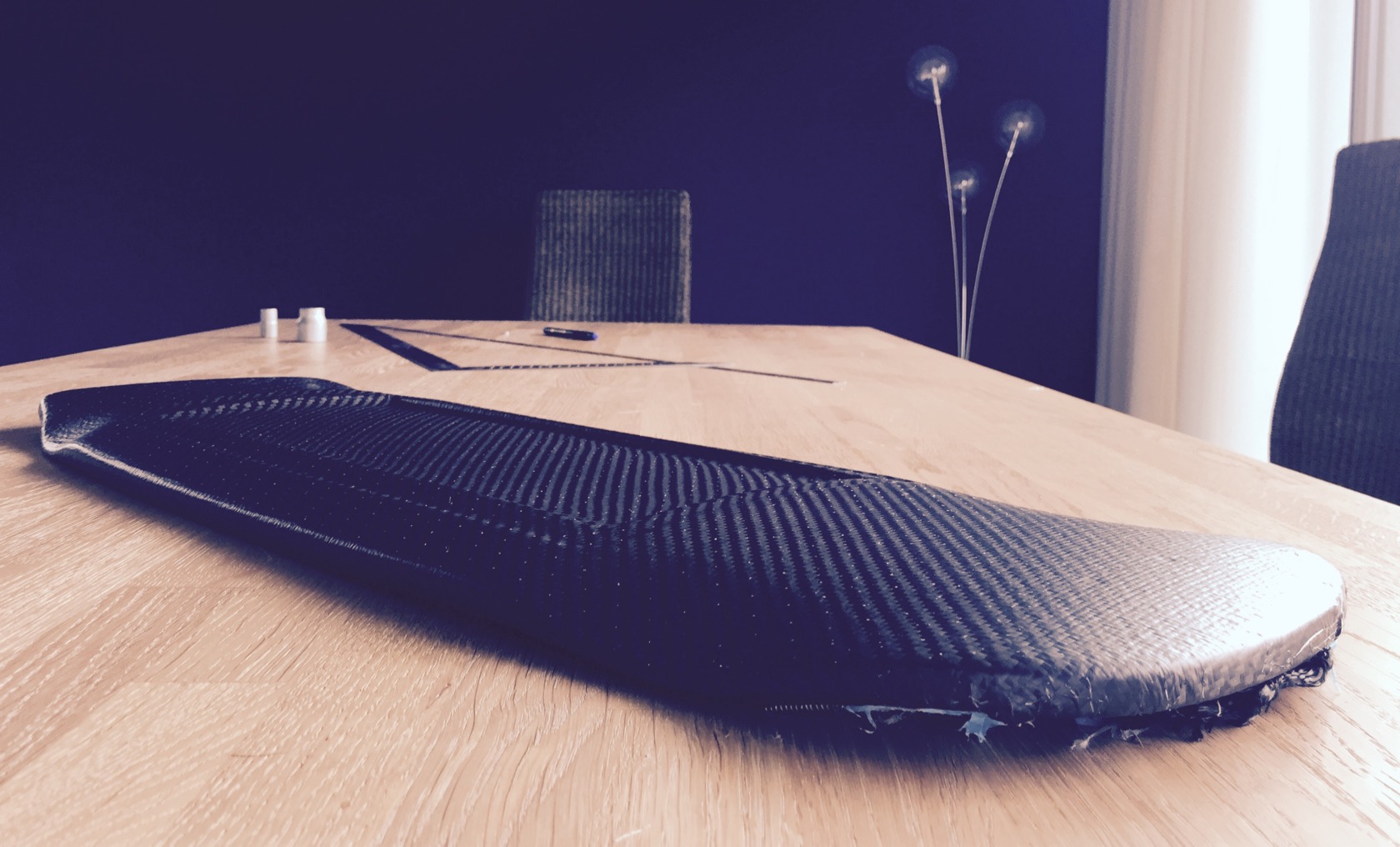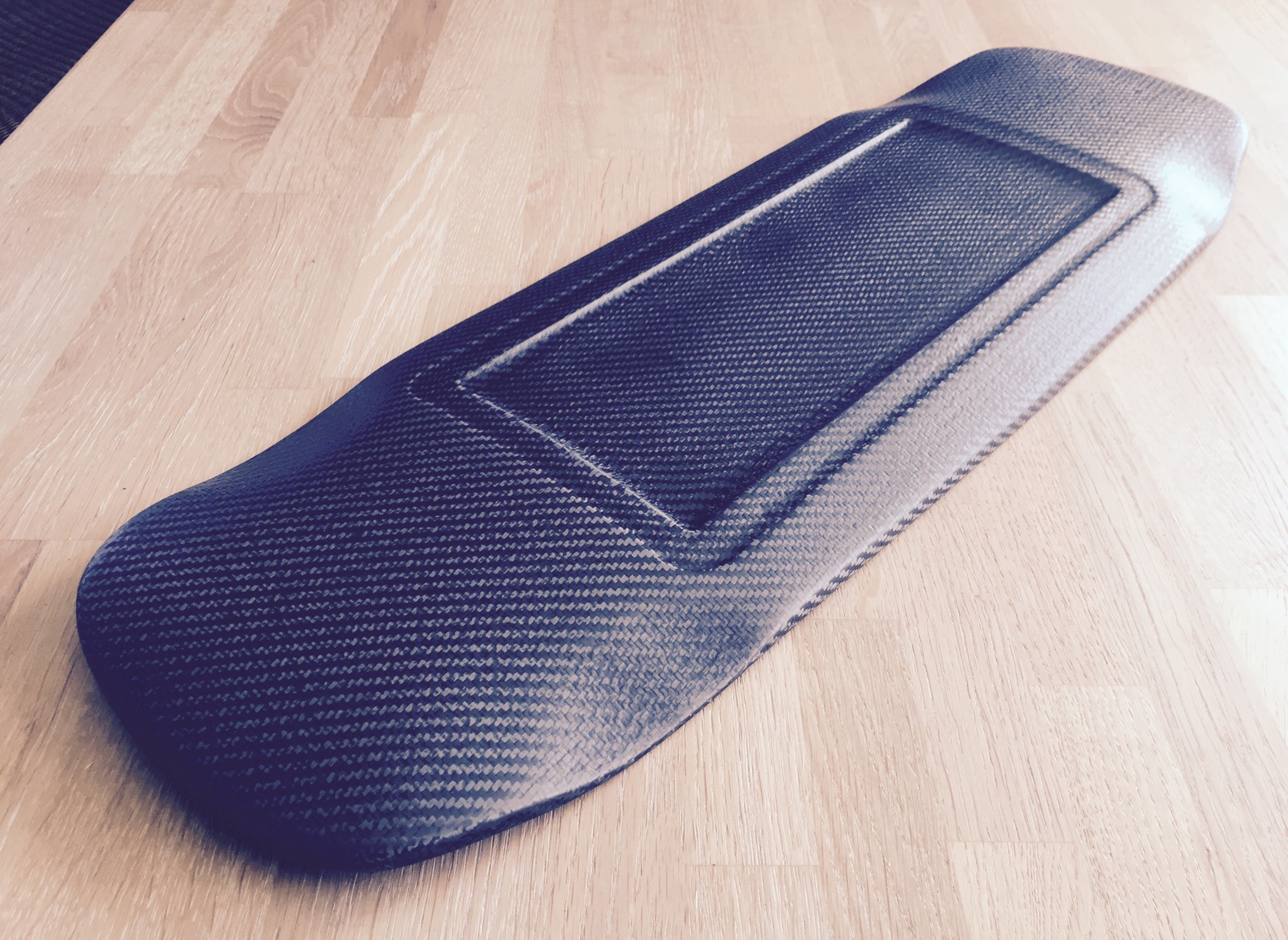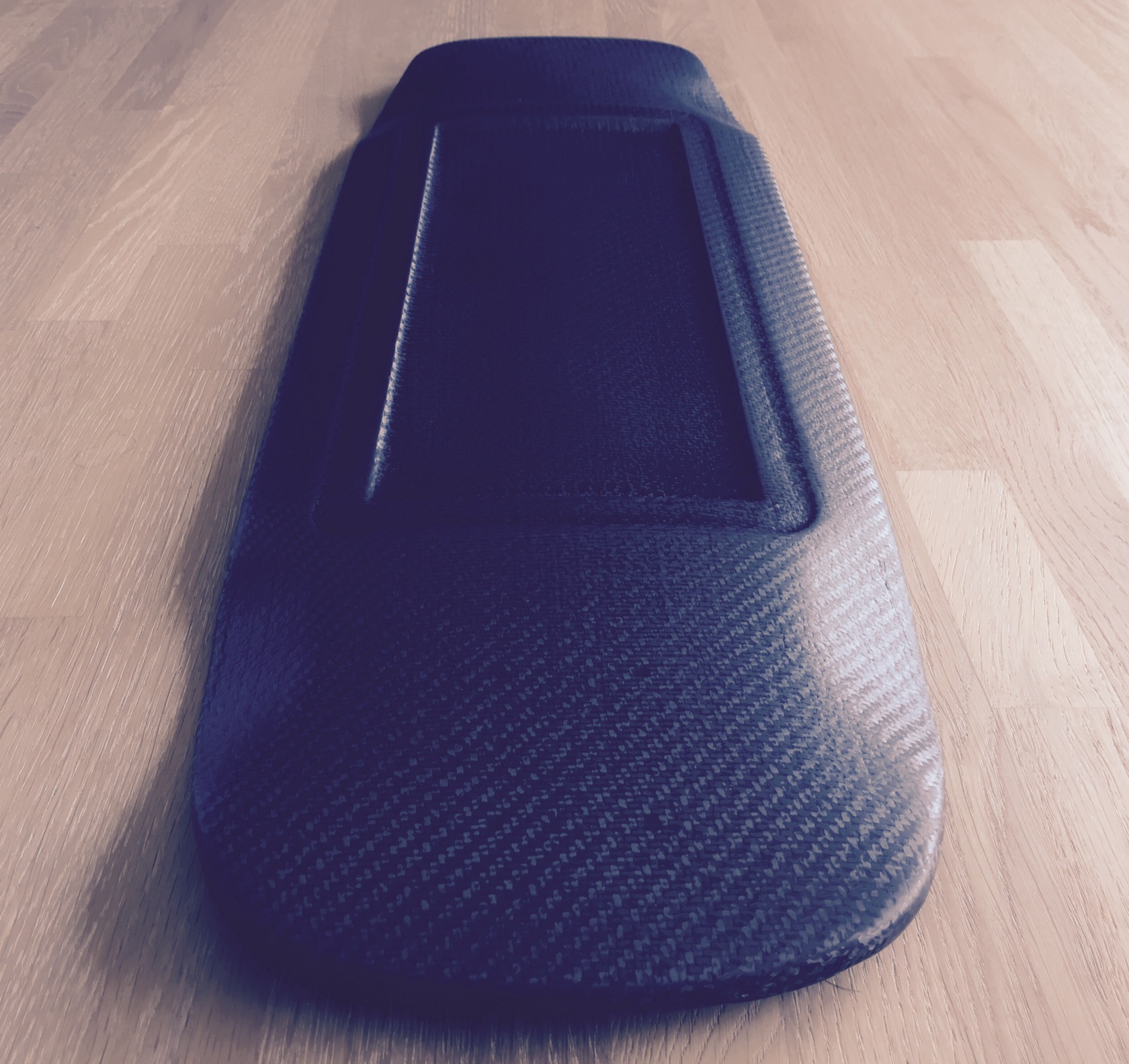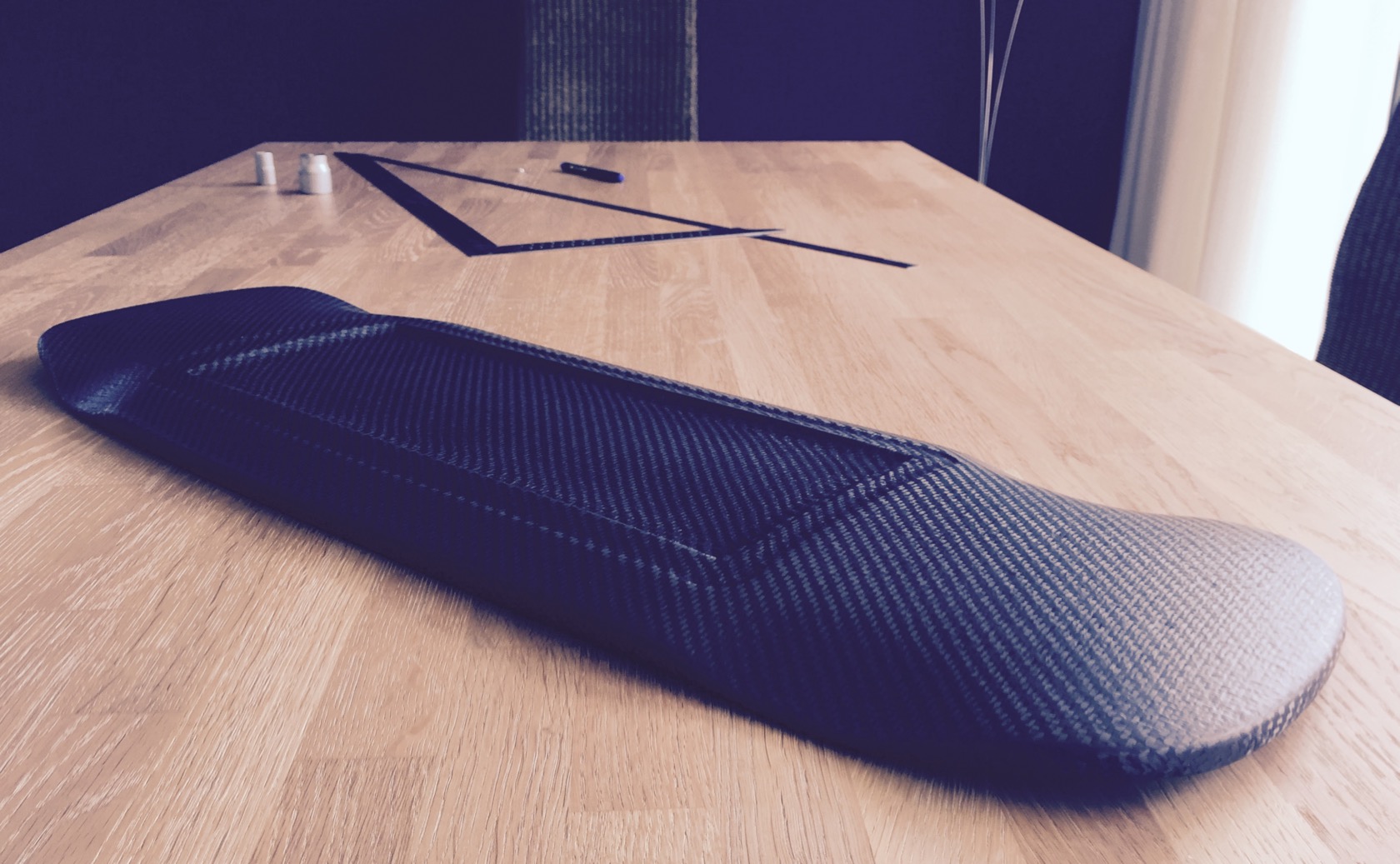thought about whether I should make a build thread here or on my beloved endless sphere, but this place is really quite alive and well organized - hard to say no. 
really enjoyed @RunPlayBack Spudnik build and when I recently came across OKPs unikboard video (http://unikboards.com), which apparantly also use a Jet Spud with freeboard S2 bindings, I was sold - no clue why I didnt think about freeboard bindings on a regular street board yet. bindings are an awesome thrill that allows a lot of cool stuff, especially with a board that is probably a lot lighter compared to my trampa. pulled the trigger on the deck, which is pretty cheap with just 85€ incl. shipping and I had plenty of materials left for some carbon fun.
so for now this build will mostly focus on the infrastructure, i.e. board, wiring and enclosure. the rest is quickly done anyway … so Im not actually sure what kind of motor, wheels and trucks I want for this board yet.
so much for an introduction, lets get to it. started with some proper sanding, since I didnt like the overall finish and build quality of the board. wheel wells werent symmetric, the wood under the sketchy graphics was rough, truck mounting holes were larger than what they had to be, but found out quickly why: the drill spots werent very exact and barely fit my testmounted trucks.
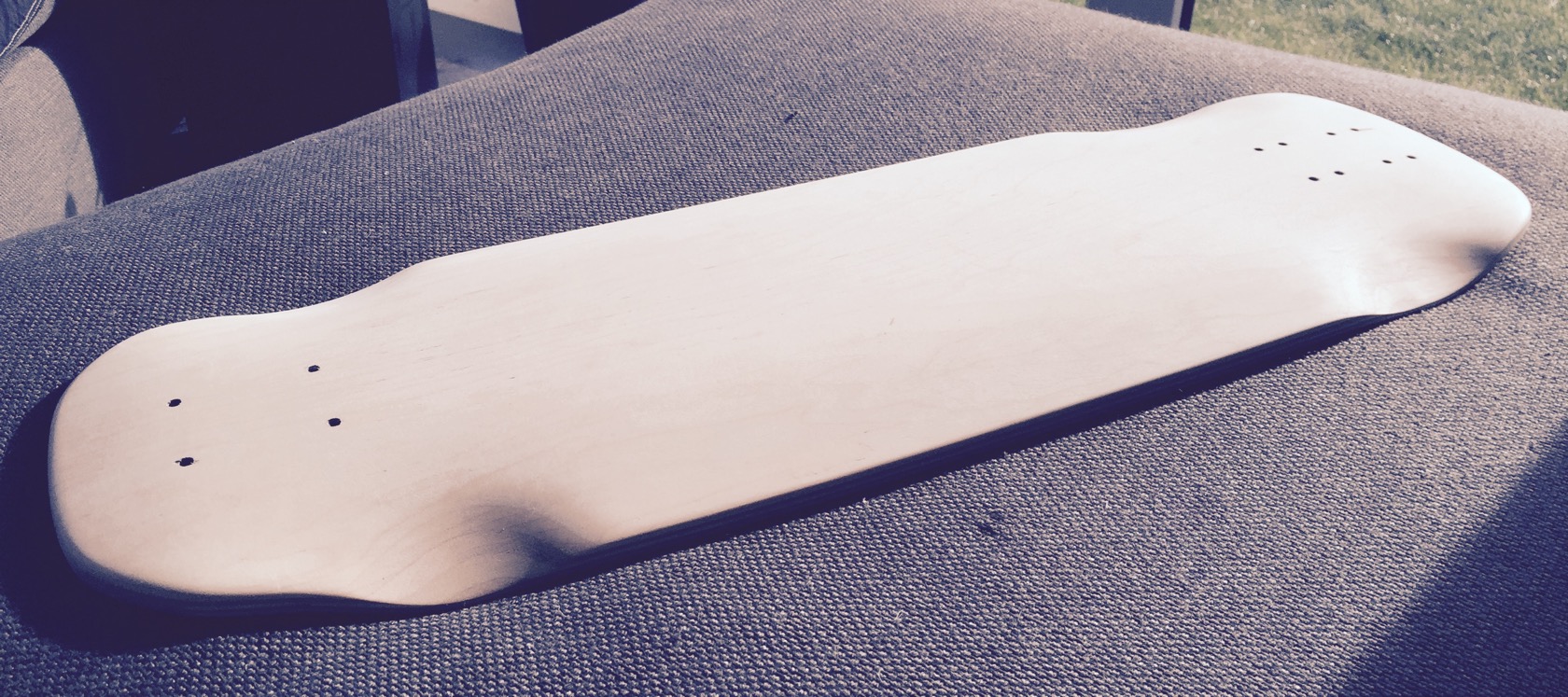
then I started drawing (which works a lot better on wood than on graphics). Had a quick sketch ready on keynote for single vesc and a liion battery and found out quickly, that by taking the wheel wells as enclosure limits, only a 10S3P liion battery was possibly on this board. so far I really loved 10S4P - its a great blend of power and durability. 10S3P will have to work here though, nothing else possible and I think a little less weight probably suits a freeboard well.
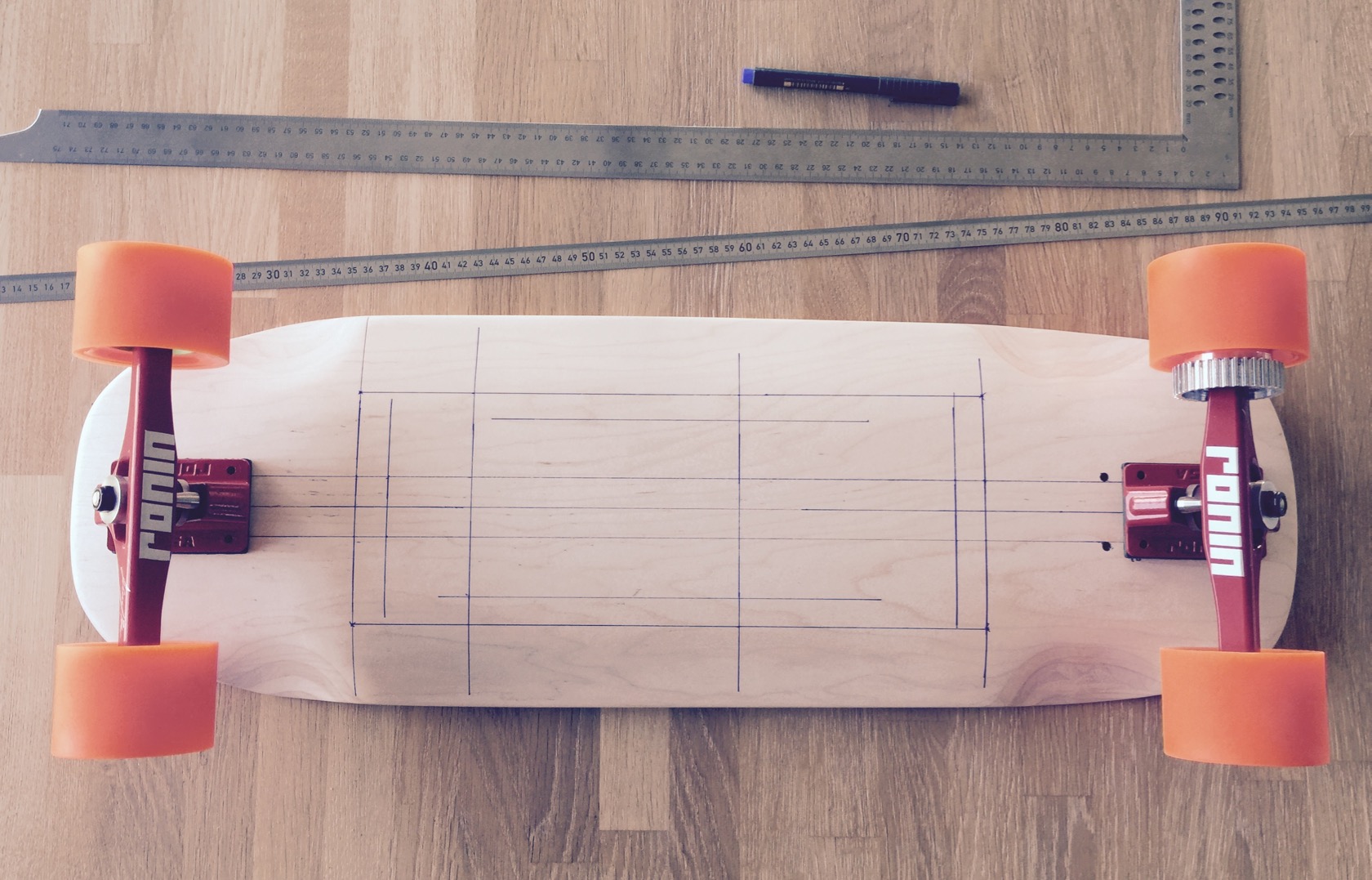
just added the ronins and kegels for some visual impression - got these wheels and trucks since forever in my treasure chest and never got to use them properly.

off to routing the electronic compartment - I made some router guide with that straight piece of wood. you can see one routed line there already, nice and straight, much better than free hand routing (which was kinda my first attempt to it a while ago). I carved out wood of 6-7mm depths.
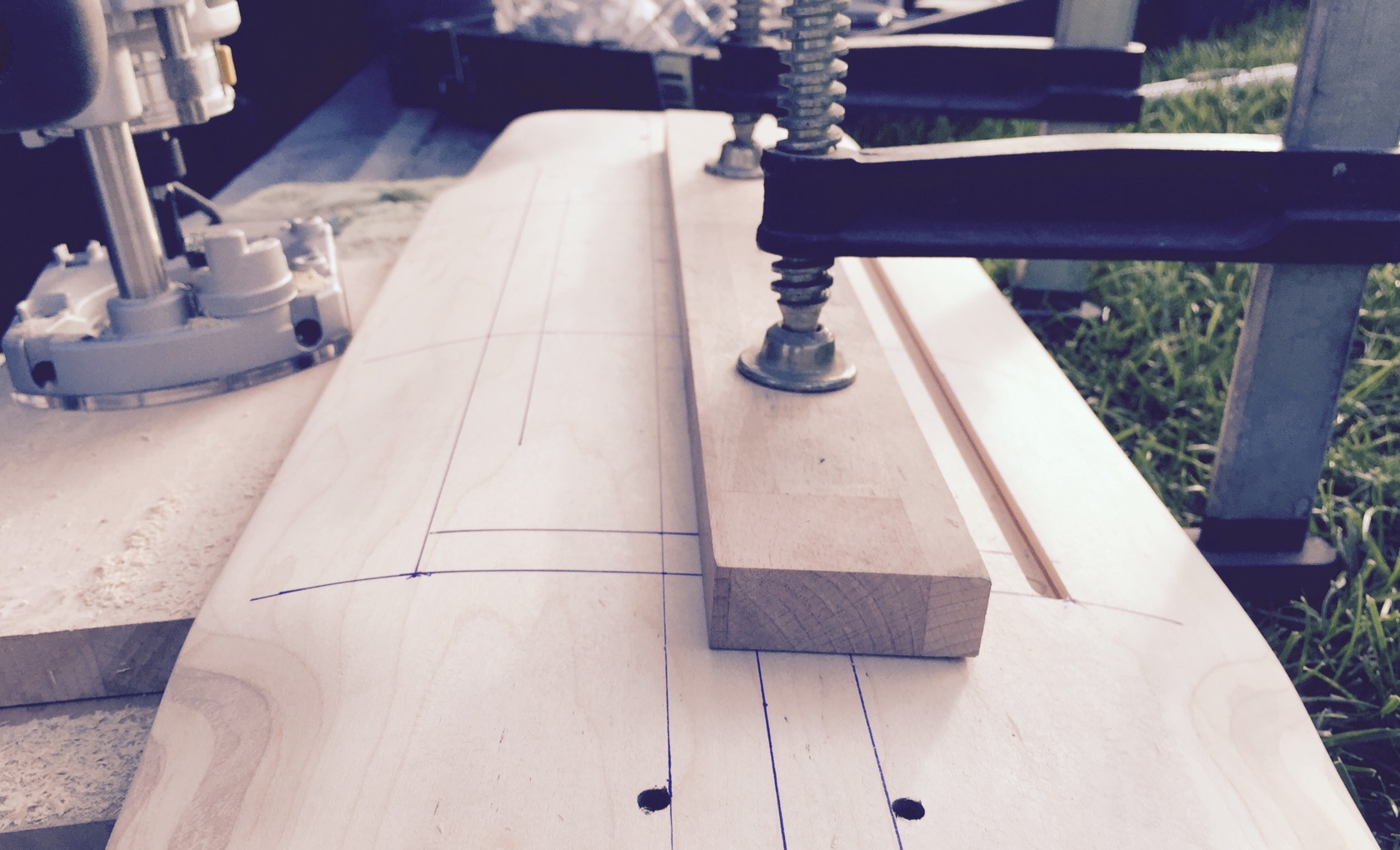
2 long sides done, now the perpendicular sides to have an outline for the rest (which I did with a wider routing bit and without any router guides).
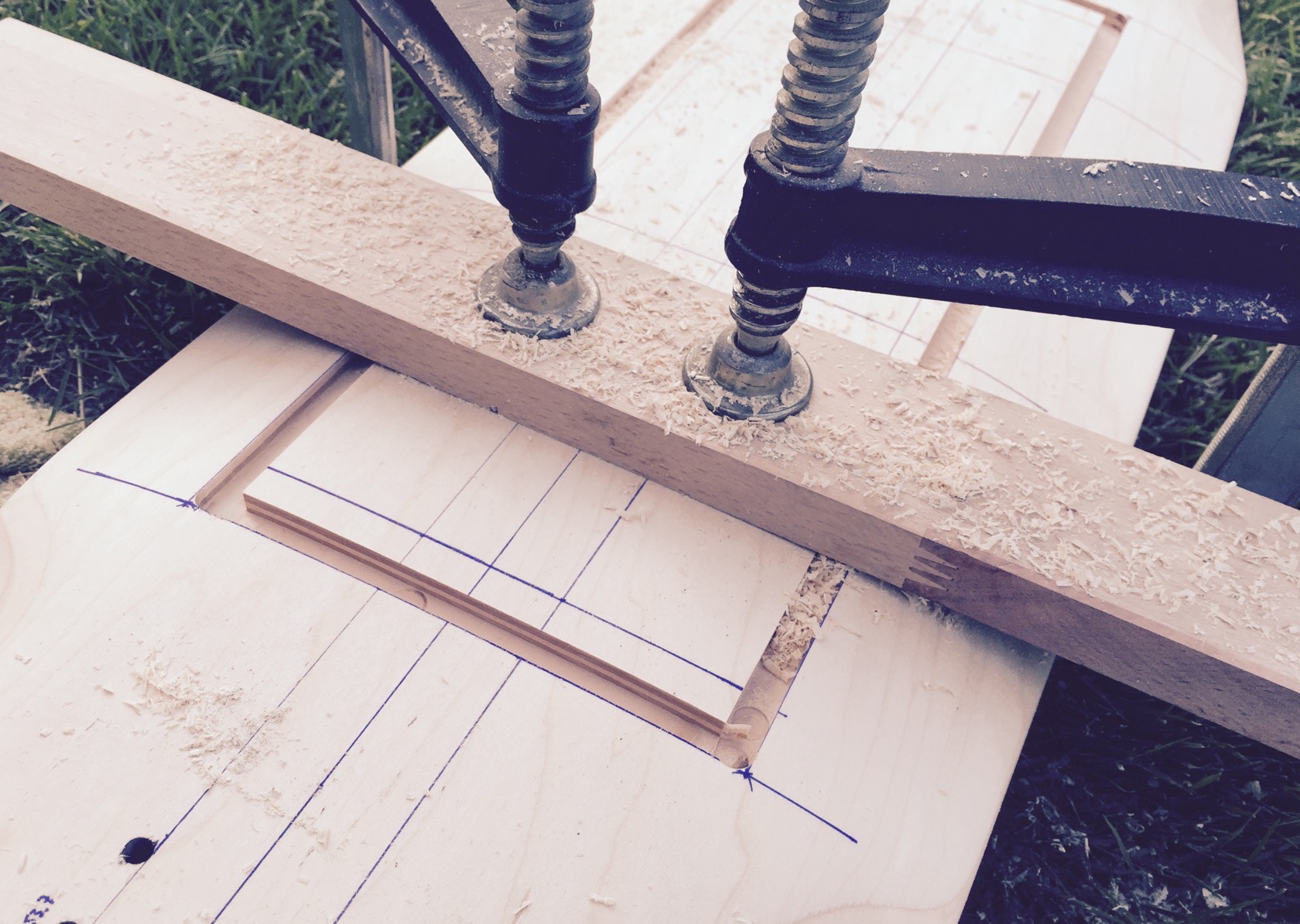
done, some sanding and I called it a good first evening. that 6-7mm depth was REALLY a lot, I think there are just 2-3mm left on the board - sounds really hollow when I knock in the middle region and it feels like I could break the board by hitting the middle hard. gotta need a lot of carbon to restore the structure:
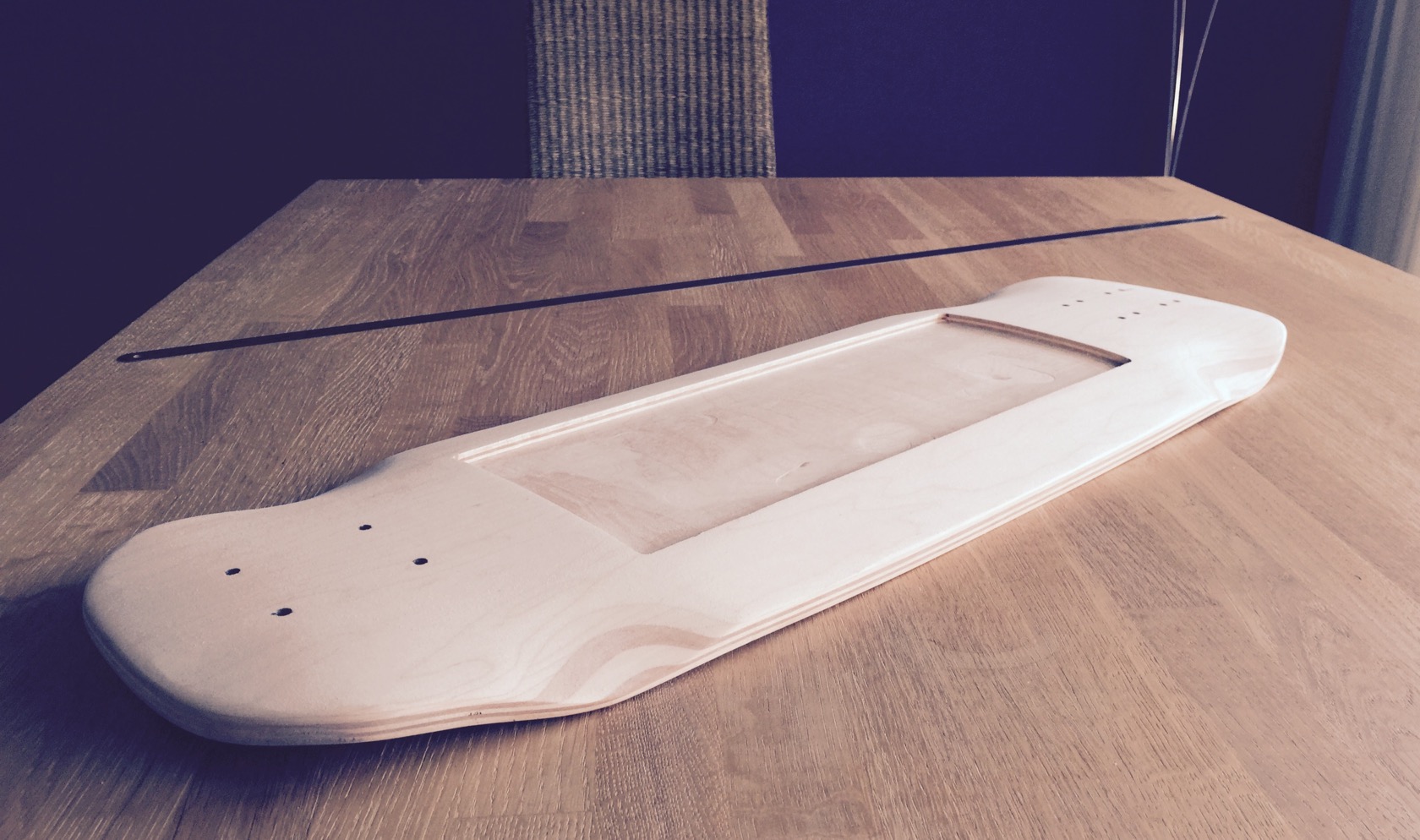
this time I wanted to push a little further like with every build: planned to sink in the enclosure lid like on my evolve board, so that its actually on level ground with the rest of the roadside board surface. this will also make it much easier to trim the enclosure later when its done, since it will act as an automatic trim guide.
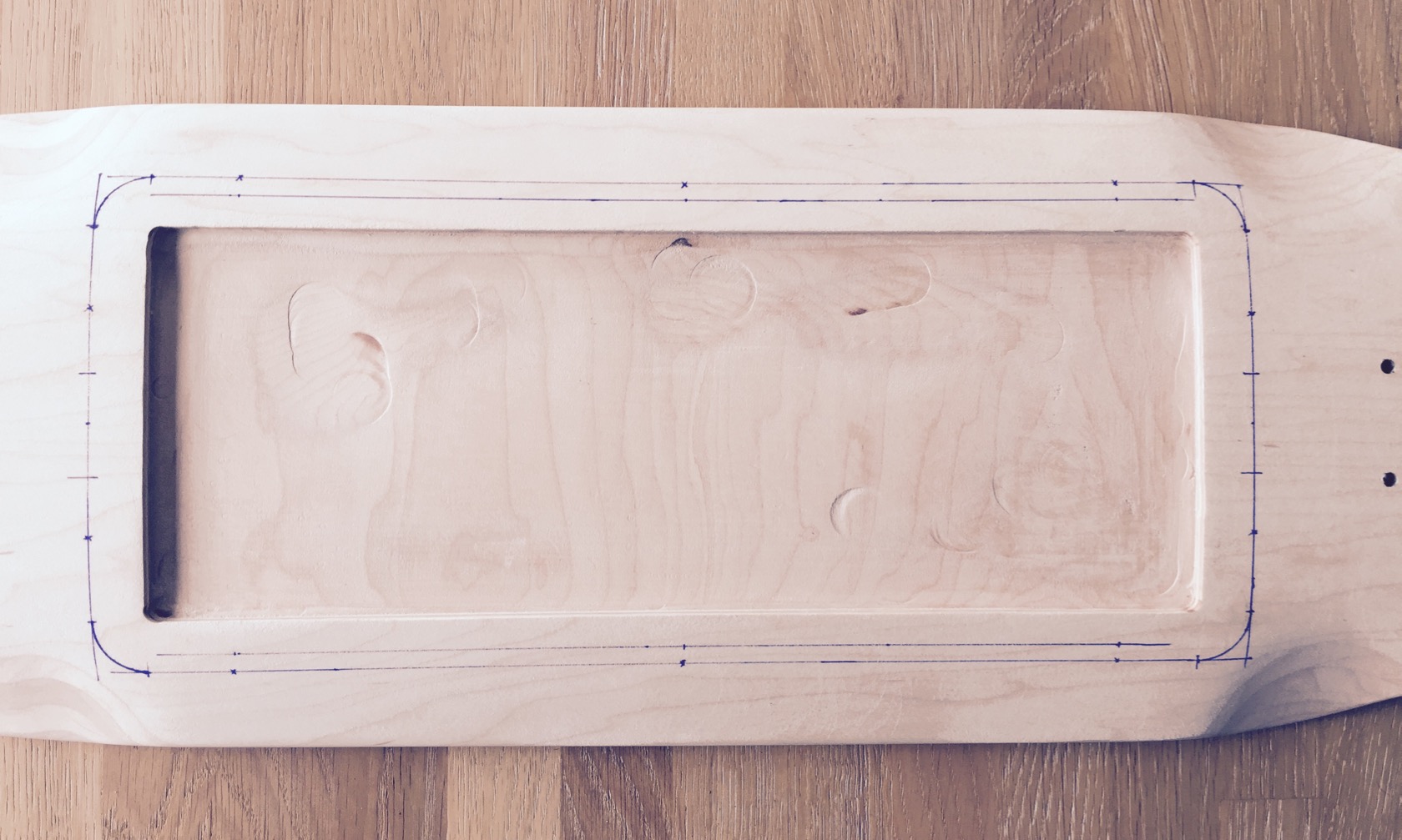
used a large nut for a nice rounded lid:
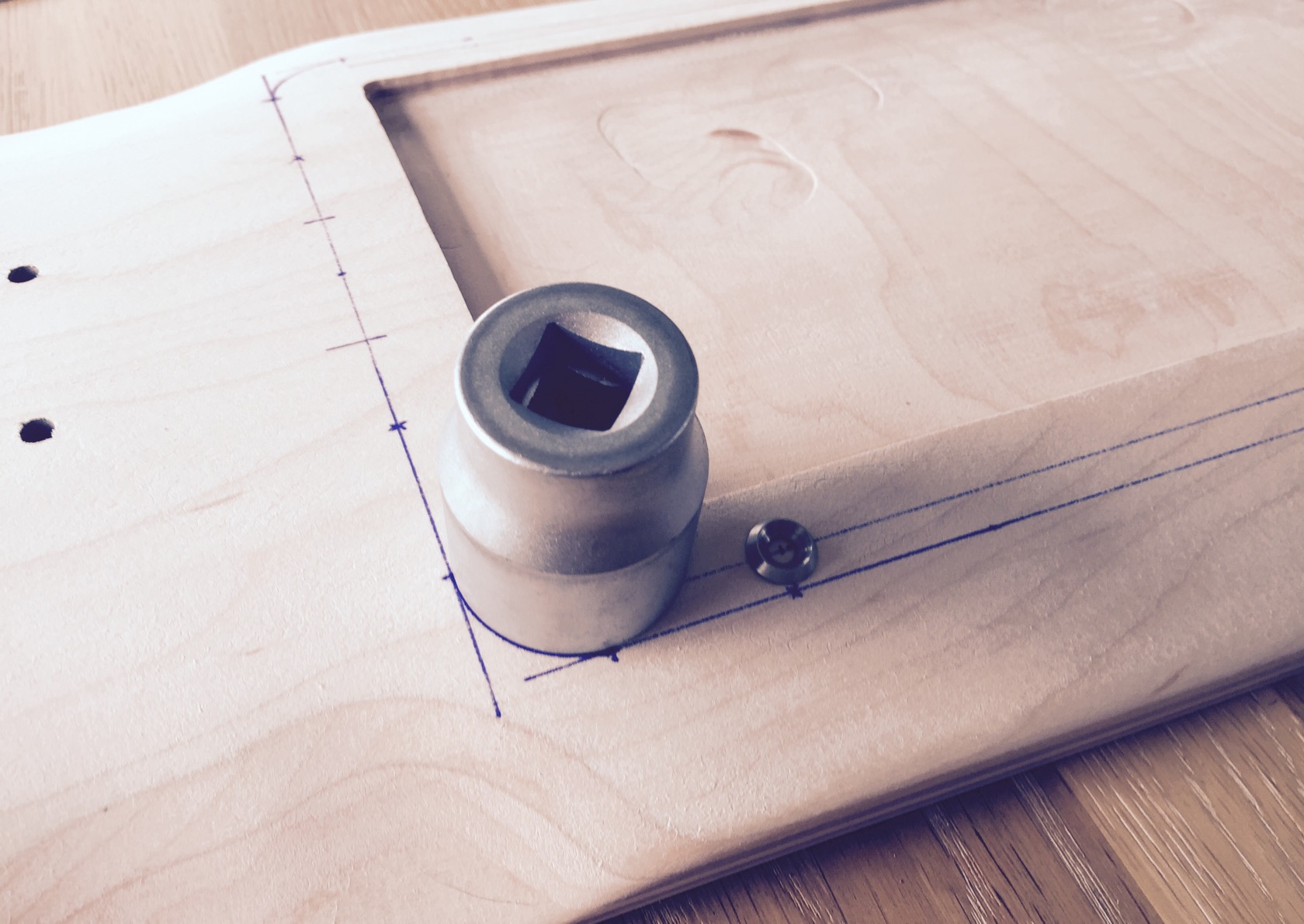
and some routing, I really was extremely careful not to screw it up since, unlike the middle routed box, the sunk in lid will be visible from the outside. I also drilled mounting holes already for M4 inserts, so that those will actually be protected and not visible under the carbon.
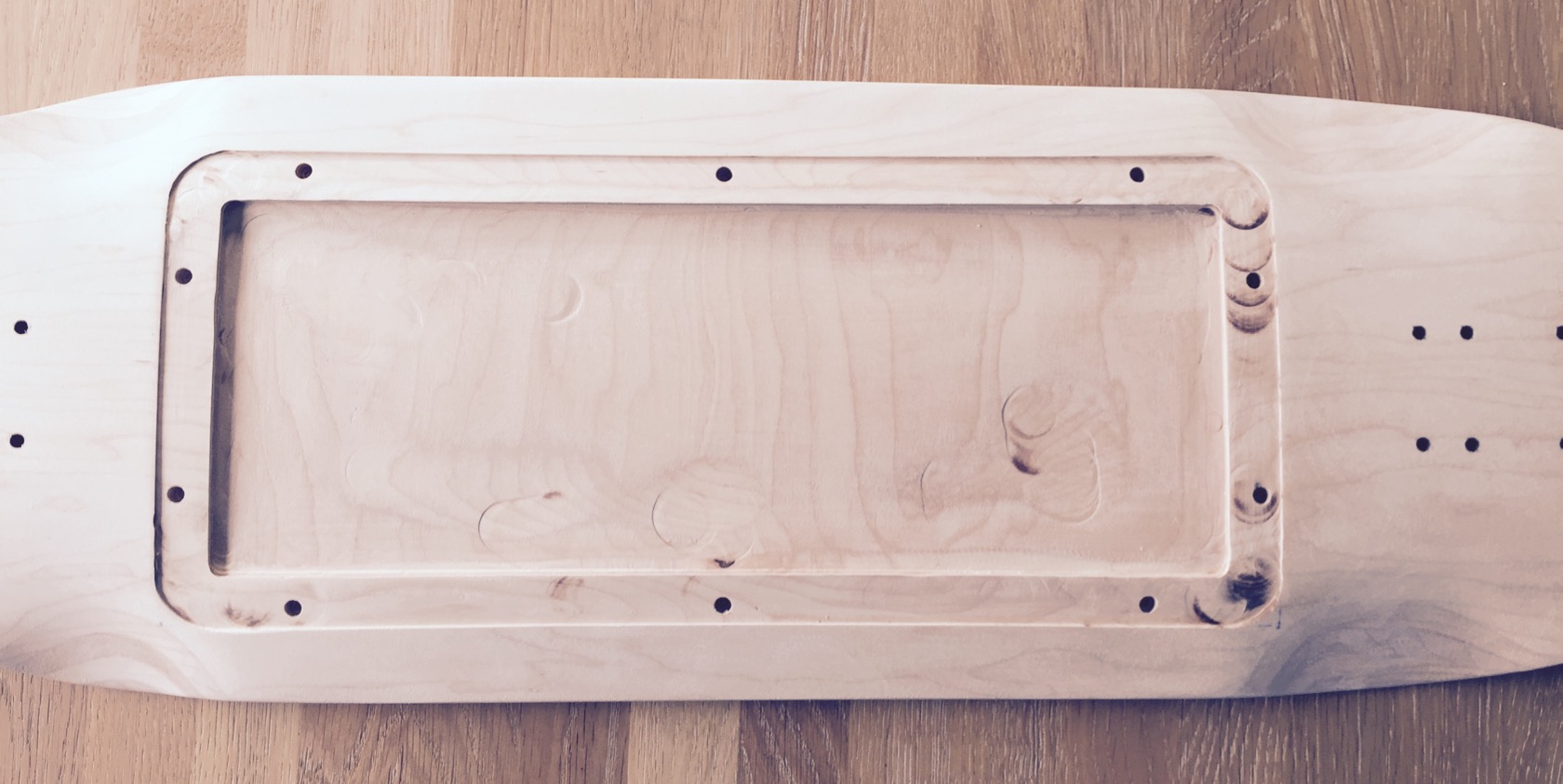
had some burn marks from the router bit because I was very careful and worked very slowly 
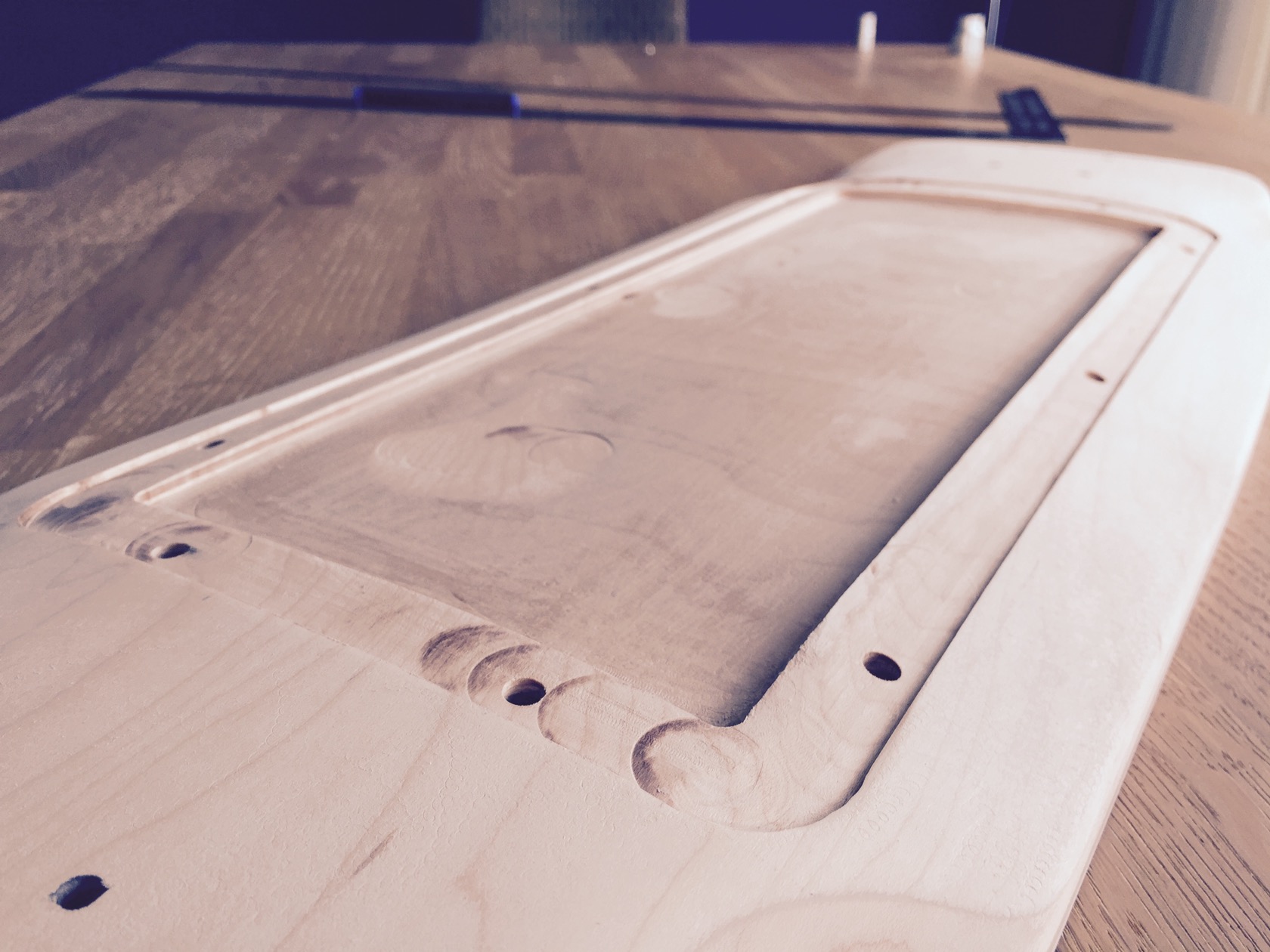
… and used filler to get rid of the 2nd pair of mounting truck holes and some imperfections.
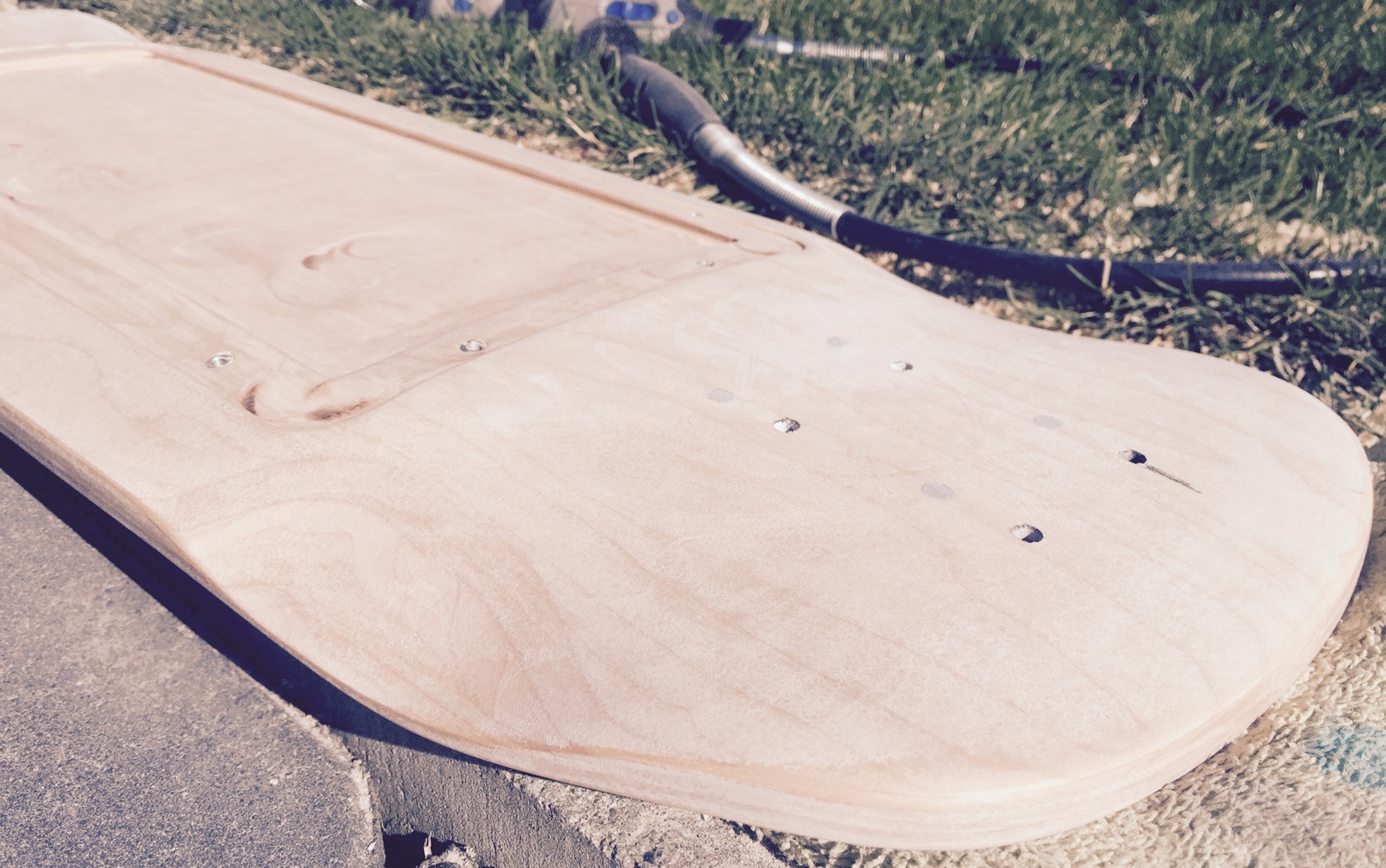
I actually drilled real holes into the board this time for the inserts. my plan is to lay a few layers of carbon roadside to restore the boards structure, then use a very slim drill bit to open the carbon in the right places from the boards topside! the carbon and resin will keep the inserts in place nicely and the inserts will be actually mostly covered by carbon except for the small m4 hole!
problem is with these inserts: sometimes, and only when used with loctite, the inserted threads will come out - set under carbon and resin like that, it certainly wont happen. topside of the board will get the same treatment later, so the inserts will be stuck between 2 resin carbon sheets and that should properly seat them for good! 
anyway, to actually lay carbon, I didnt want the resin to fill the threads of the m4 inserts and exit on board top side, so I added m4 screws into the inserts. Im a little worried about that, not sure how strong the resin bond will be.

threads are covered! quick note here before Im off to vacuum bagging: on all pictures you can see that the surface isnt actually supersmooth, but sanded with quite rough grid (P40). I did that on purpose to allow a the strongest bond between maple <-> resin & carbon layers!
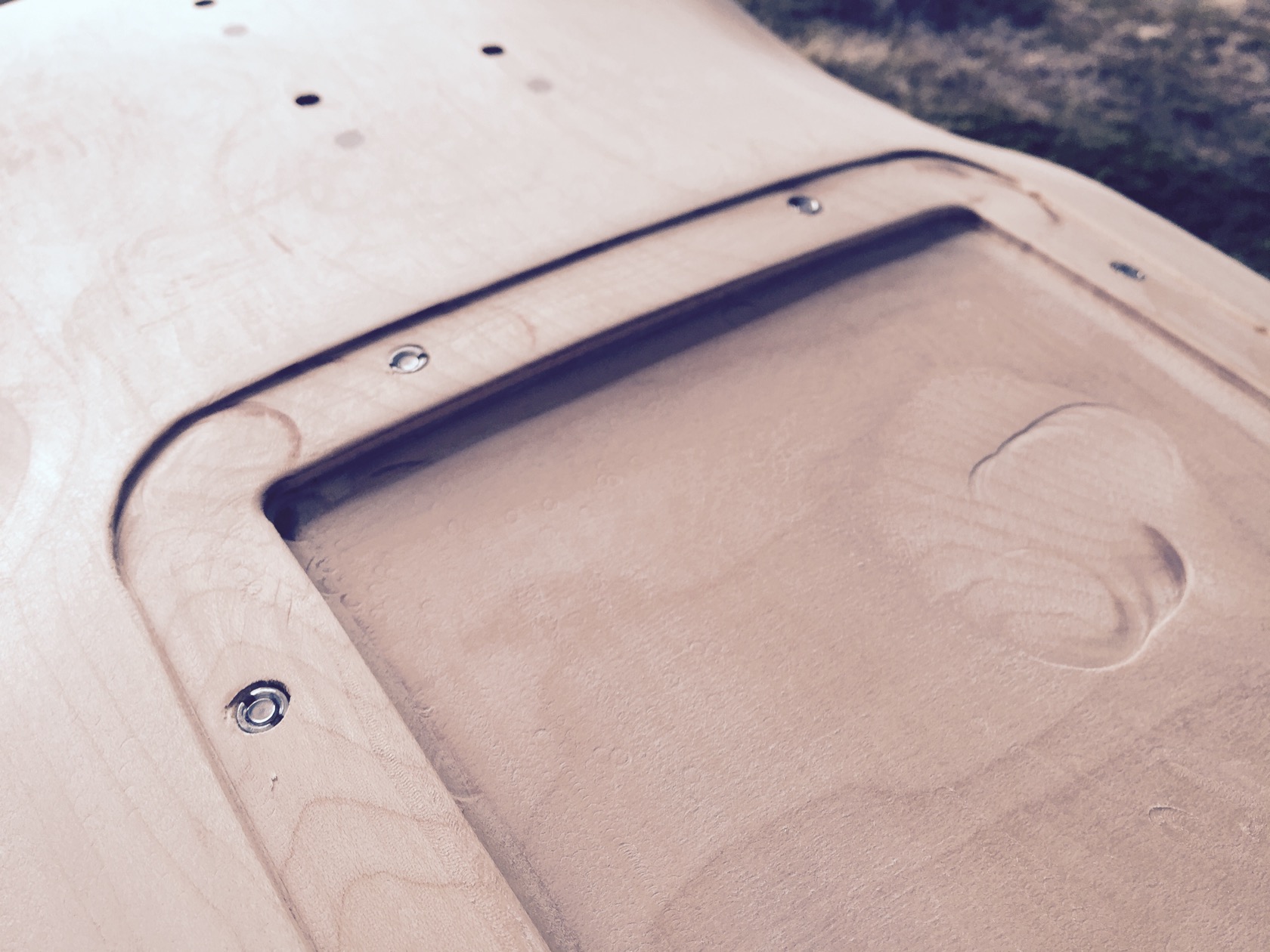
preparations for vacuum bagging: starting with the last things first and then working my way from the top when the resin is set up: vacuum bag prepared, the soaking breather layer, that also allows the vacuum pump to reach every spot evenly cut into the right format!
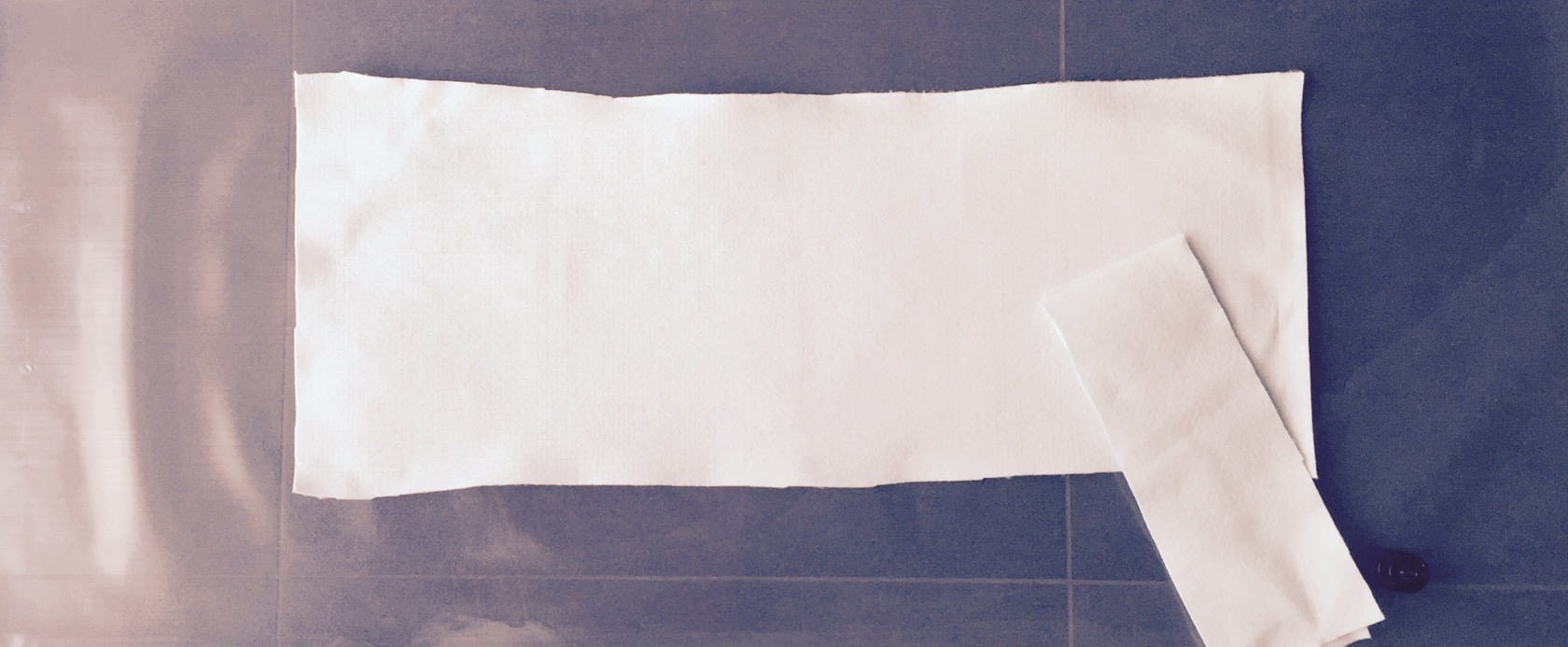
bleeder layer - basically a release film with small holes in it, so resin can transfer through to be soaked by the breather layer:
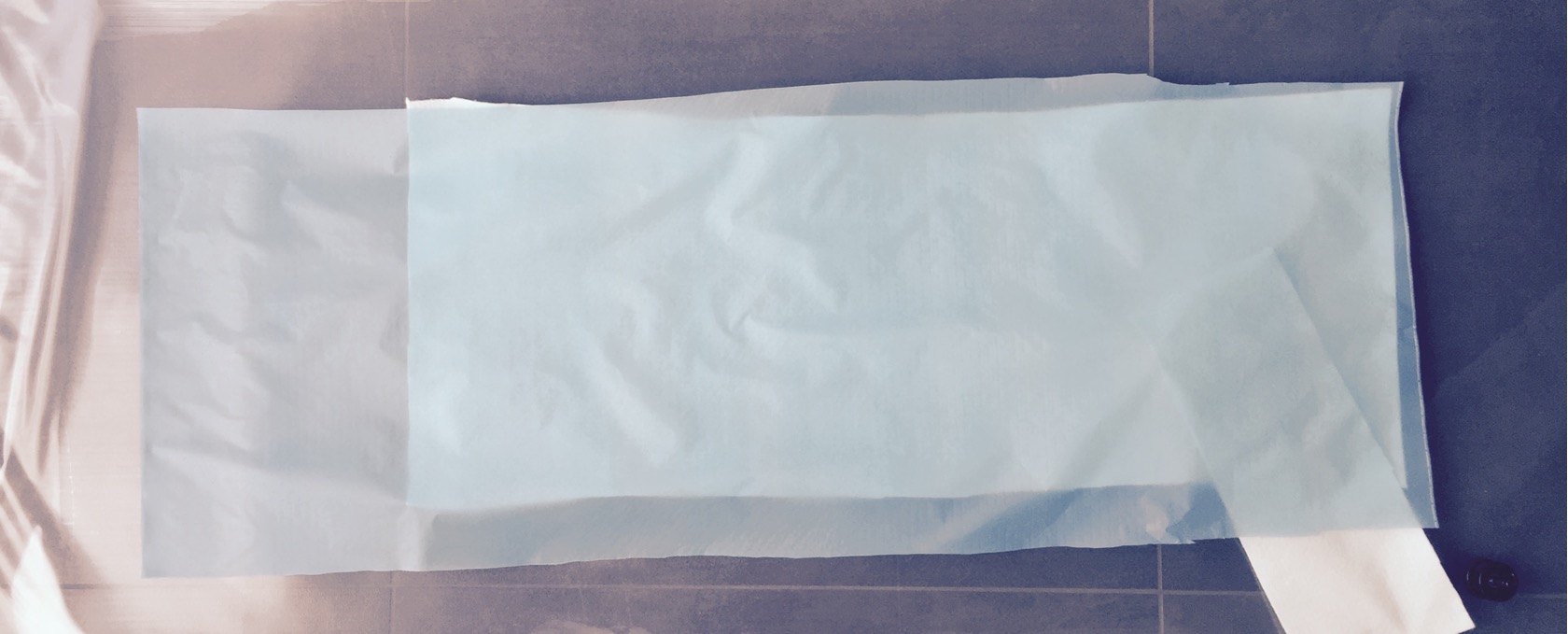
nice air grade carbon twill for a sexy finish:
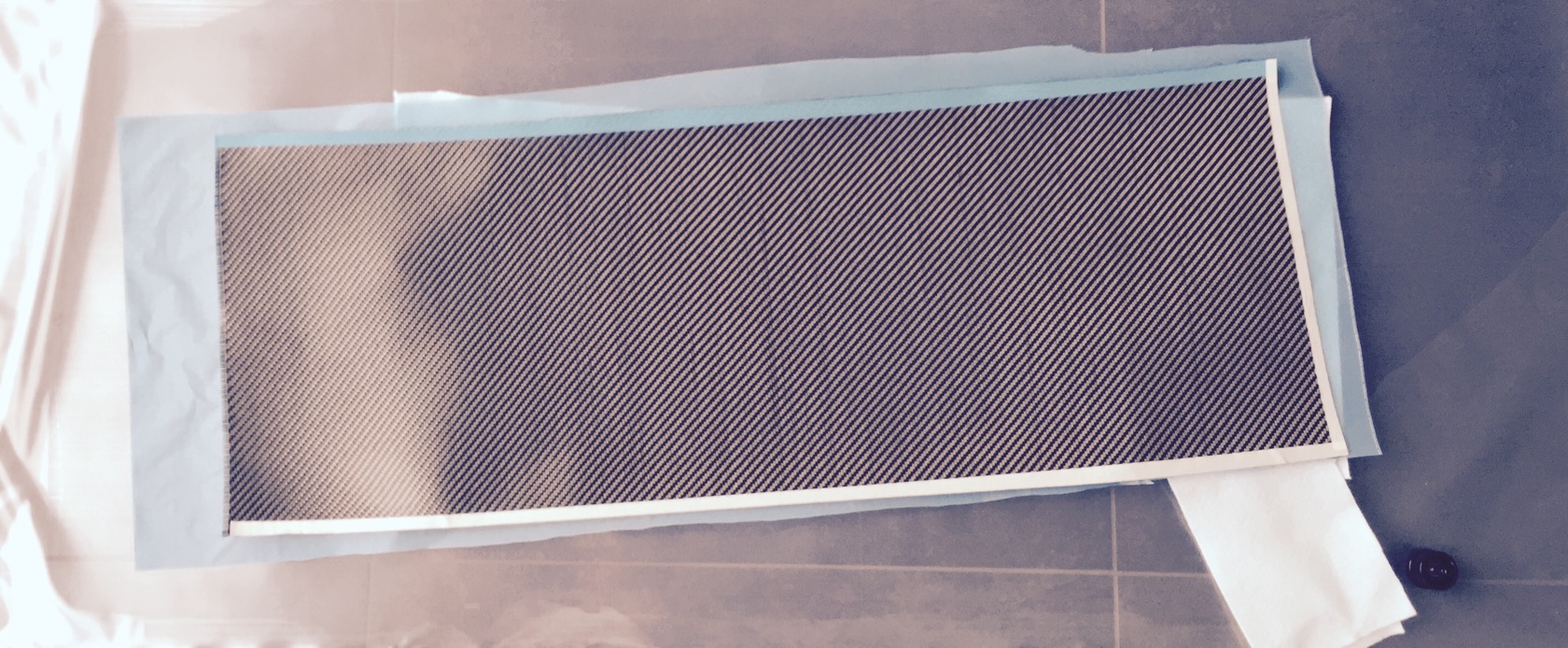
a small tip: when you cut carbon or glas weave, take some painters tape and tape the outline directly on the carbon, then cut right through it! like that you wont have fibers flying around all over the place and the carbon wont fray on the edge:
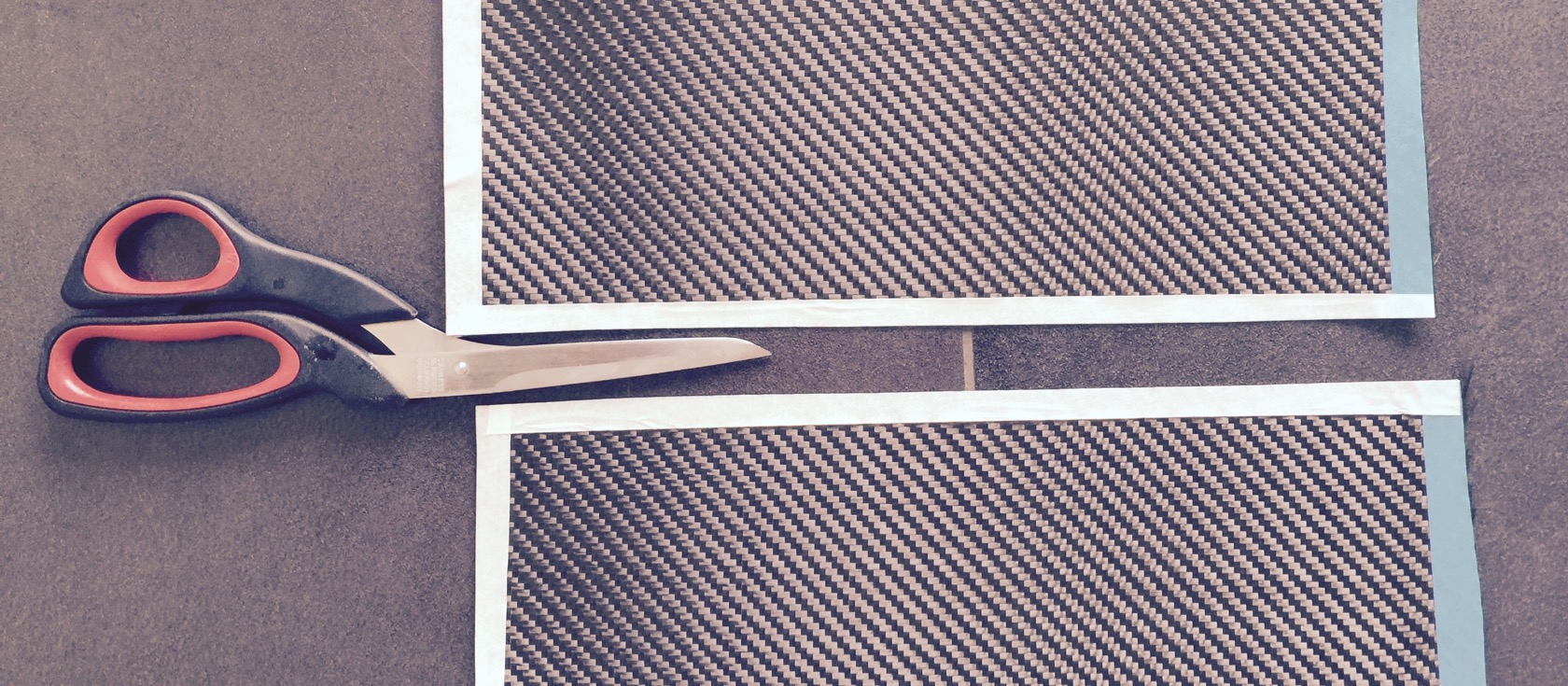
last thing and basically first layer when I start the layup: unidirectional carbon to max the strength of the typical skateboard load (bending towards road between the trucks).
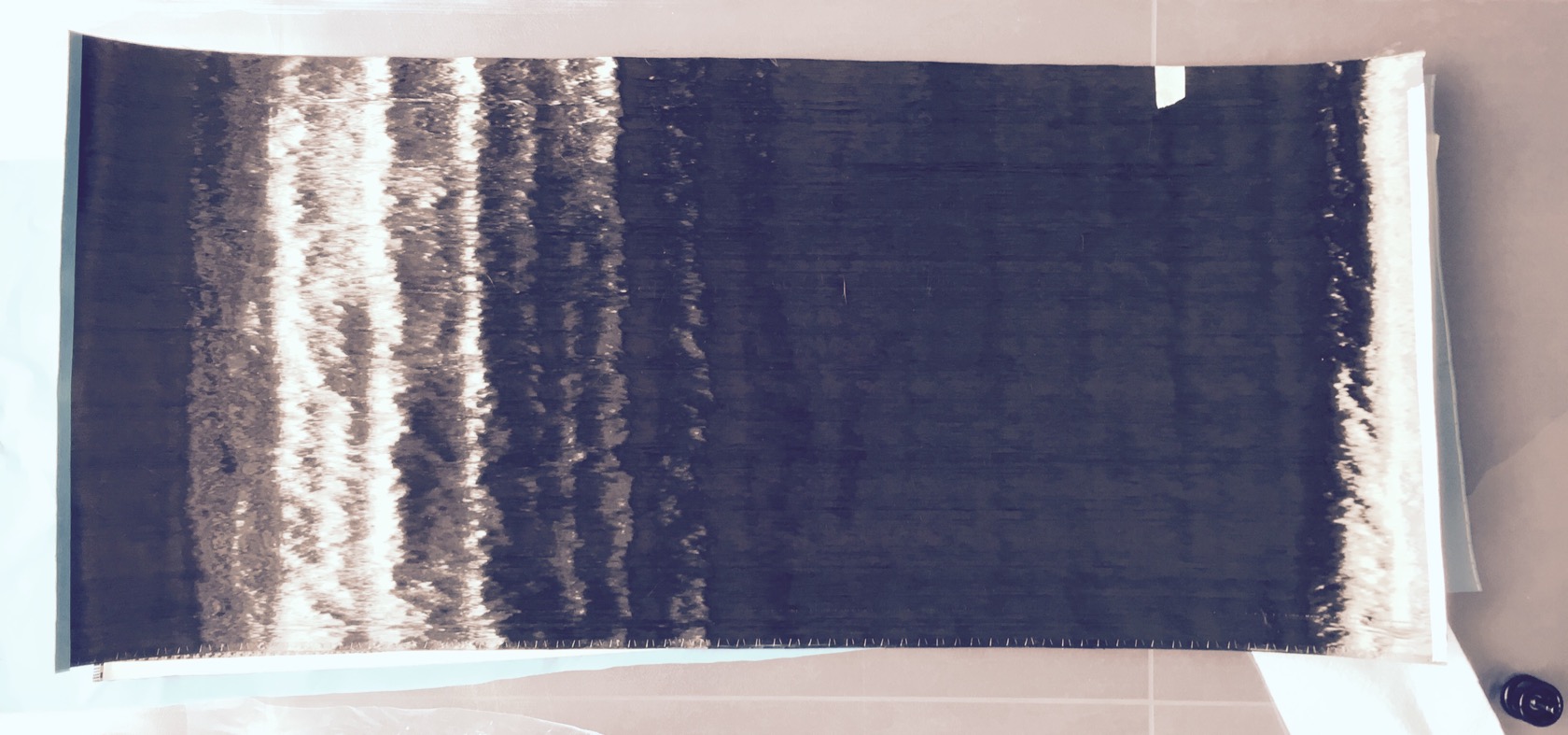
the layup will be 1x unidirectional carbon (which is a little stiffer to work with and 2x carbon twill, then add the bleeder, then breather, then put it into the vacuum bag and switch on the pump. I really dont think 3 layers is enough to fully restore the boards structure, but Ill add one more gfk + carbon layer ontop to cover LHB-style motor wires (more if I feel like I need it - will do a careful load test after the 3 current roadside layers have cured).
sadly no pictures of the layup - couldnt take any with soggy resin hands and I try to work swiftly because the resin keeps curing.
when I switched on the pump, I used the vacuum bag and the increasing pressure of the bag on the board to smoothly wrap the carbon all around the edges (hard to explain - usually a vacuum bag wouldnt put pressure on the edges really - or straighten them out or wrap around the board). this time I wanted the boardedges covered with carbon - for looks, but mostly to add further structural support and its not THAT trivial to actually get a tight fit and pressure around the edges of the board. I drew a picture to explain it - basically, with rubber gloves on my hands, I pulled the bag towards the middle on topside with really a lot of force while the pump kept applying more and more pressure on the bag.
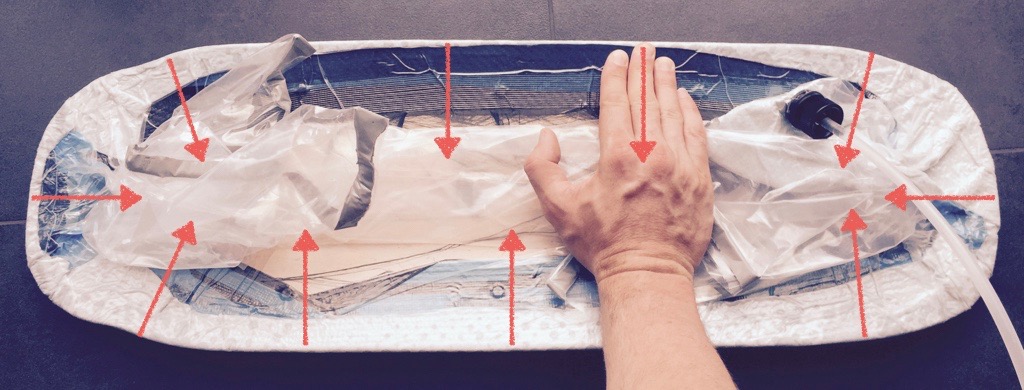
ontop of that I also used a pretty sharp edged wood block to stretch the vacuum bag in the right spots so that the routed electric compartment will have sharp edges. if you dont do that, the edges will be very rounded, with air or resin below the carbon weave and youll lose a lot of your enclosure surface by that.
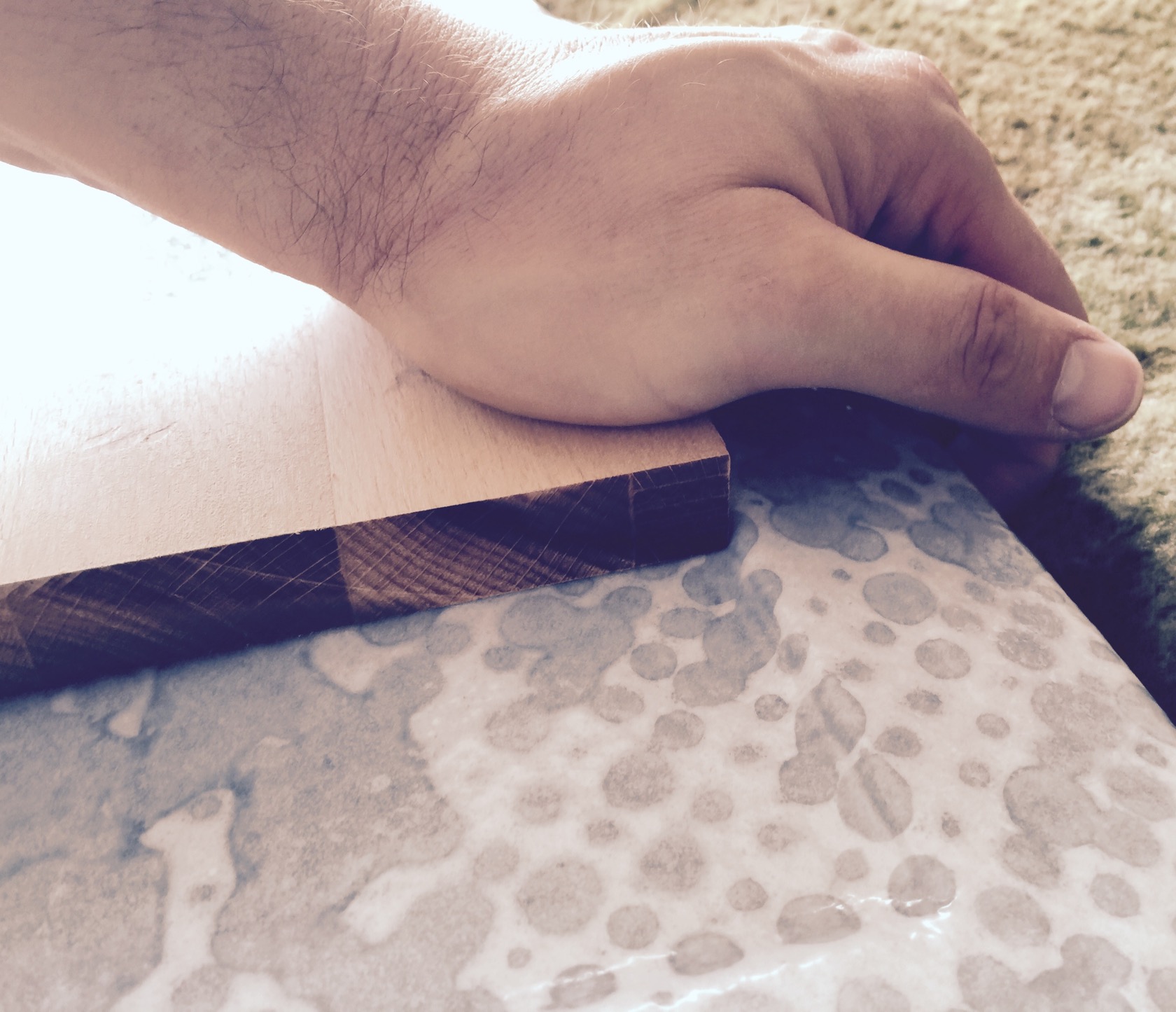
fairly sharp contours - this will be one of my sharpest vacuum bagging features on a board so far I think.
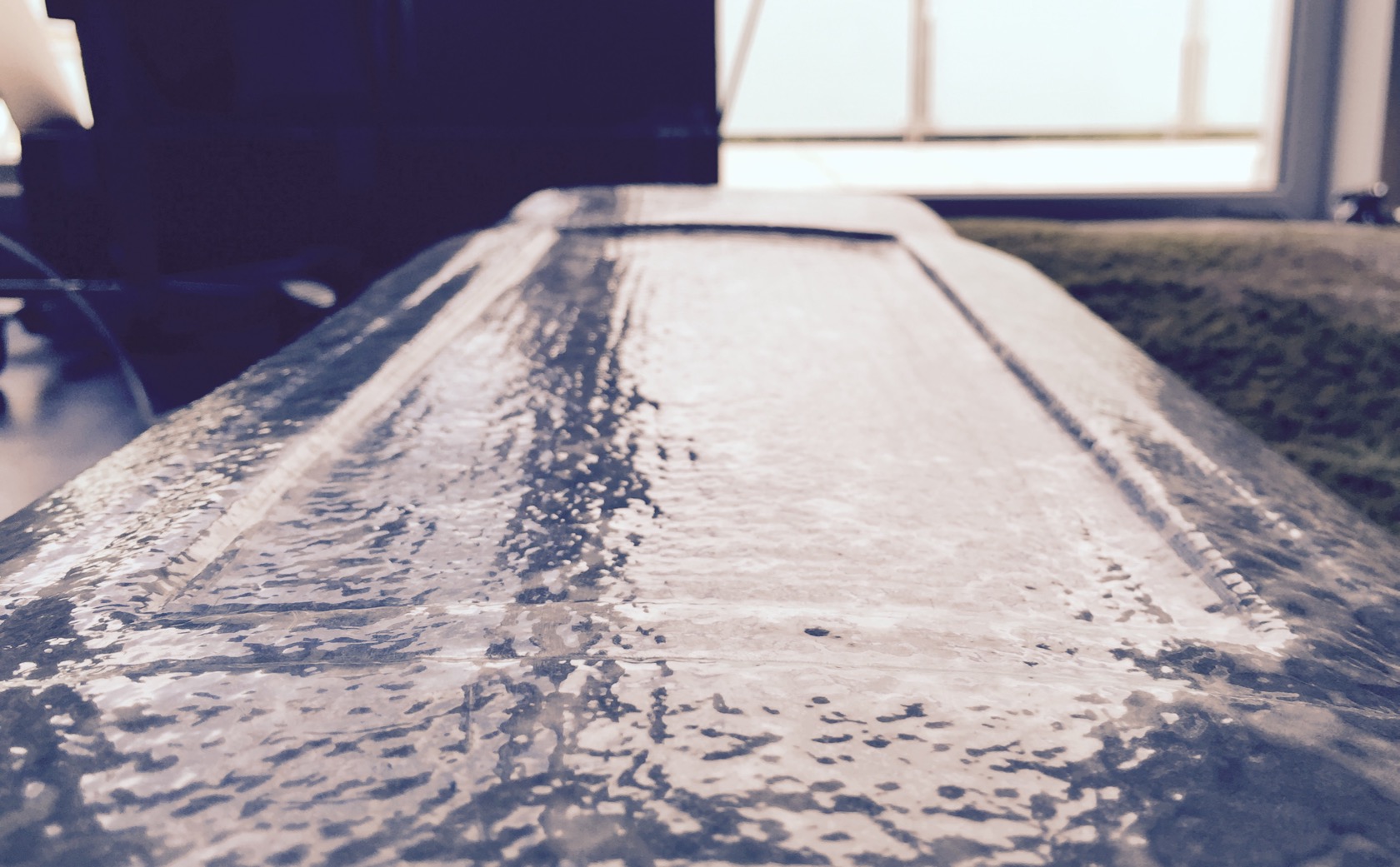
here you can see the roadside result of how I wrapped the vacuum bag around the board:

thats it for now - time to clean up and wait for the resin to cure (24h).
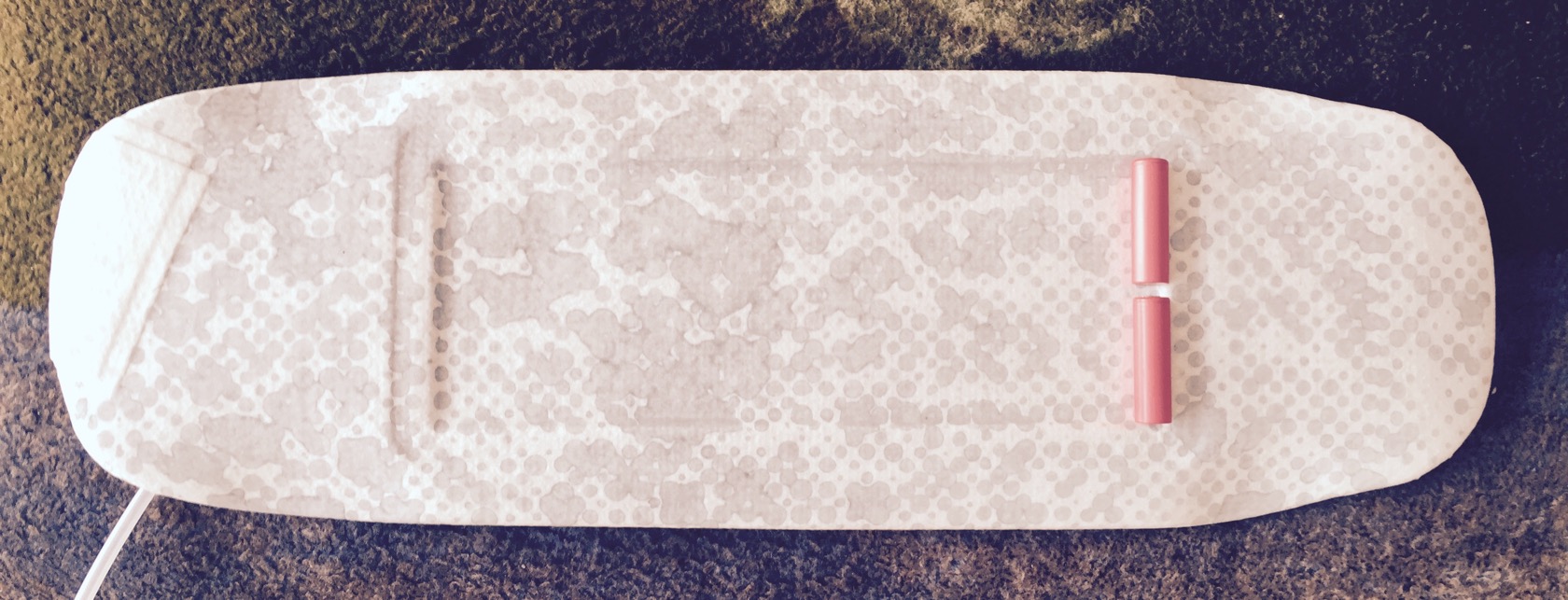
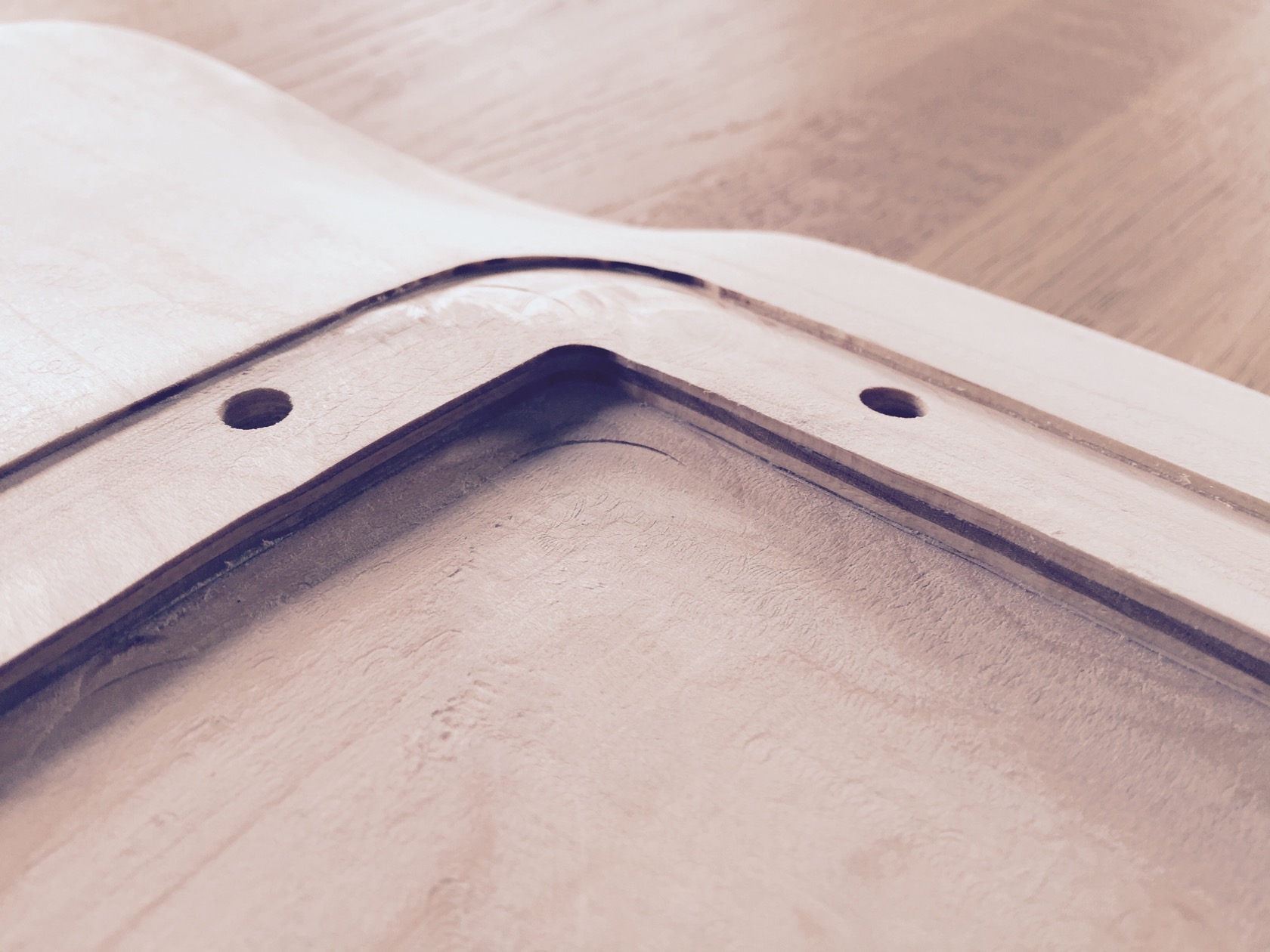
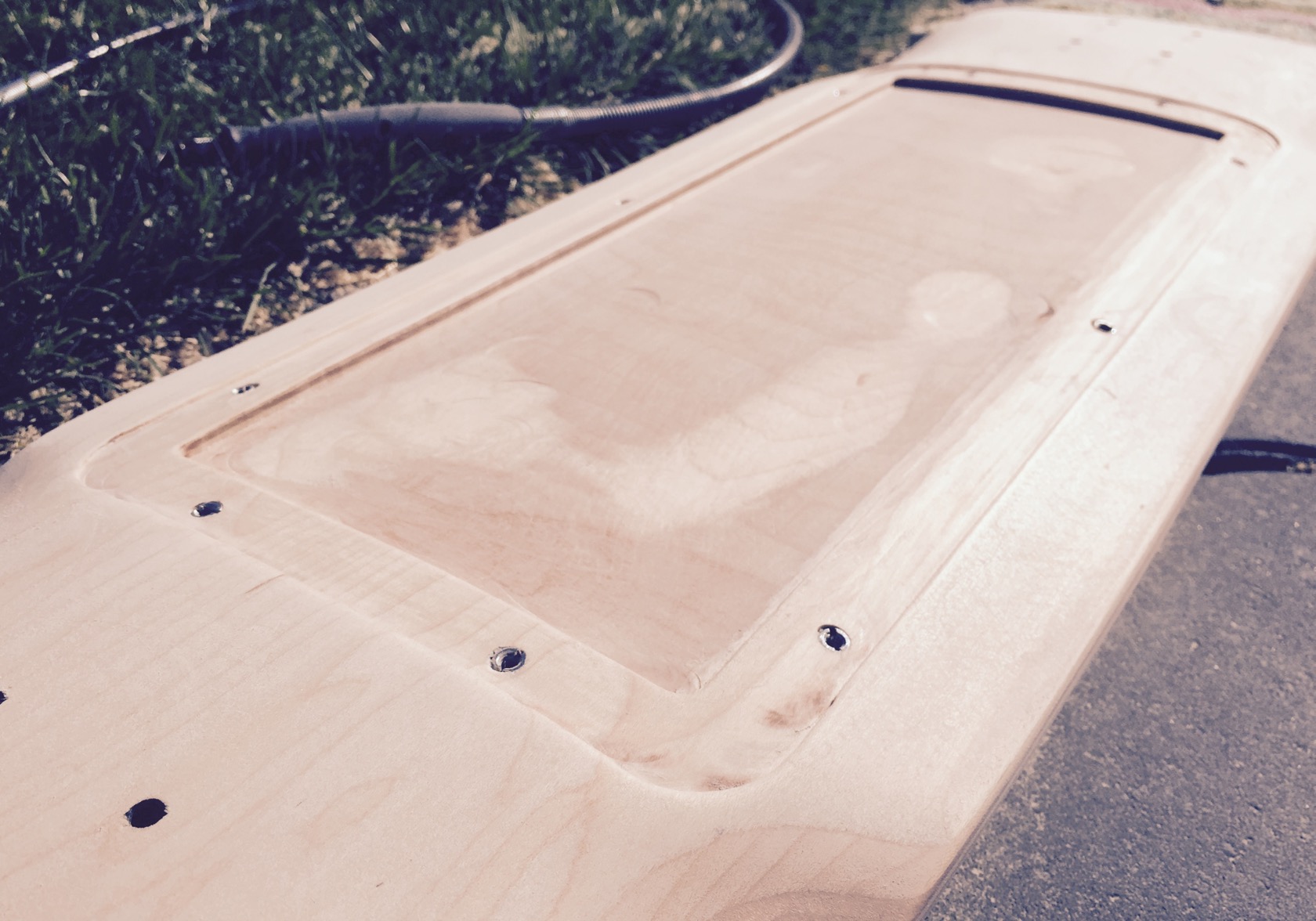



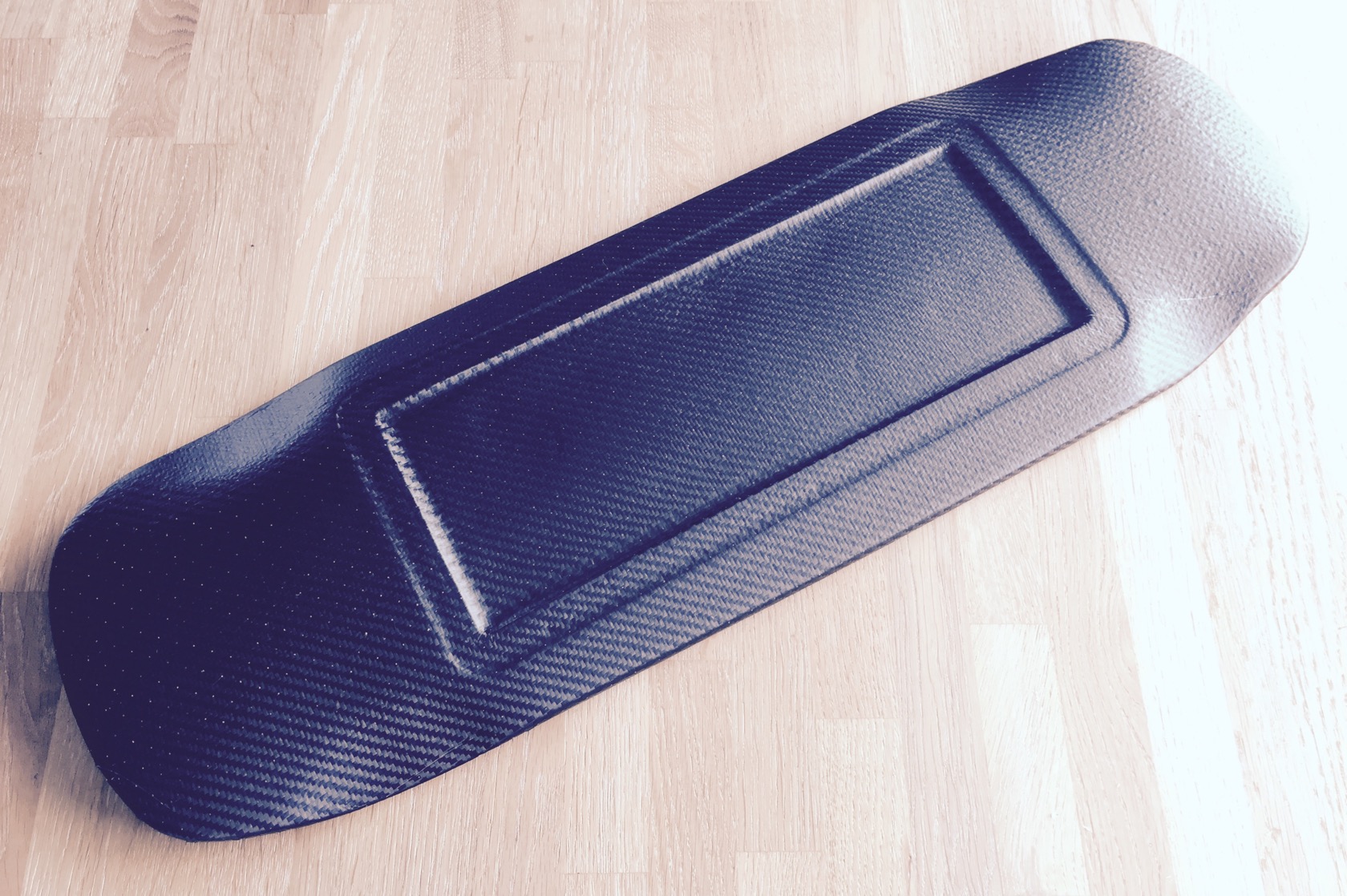
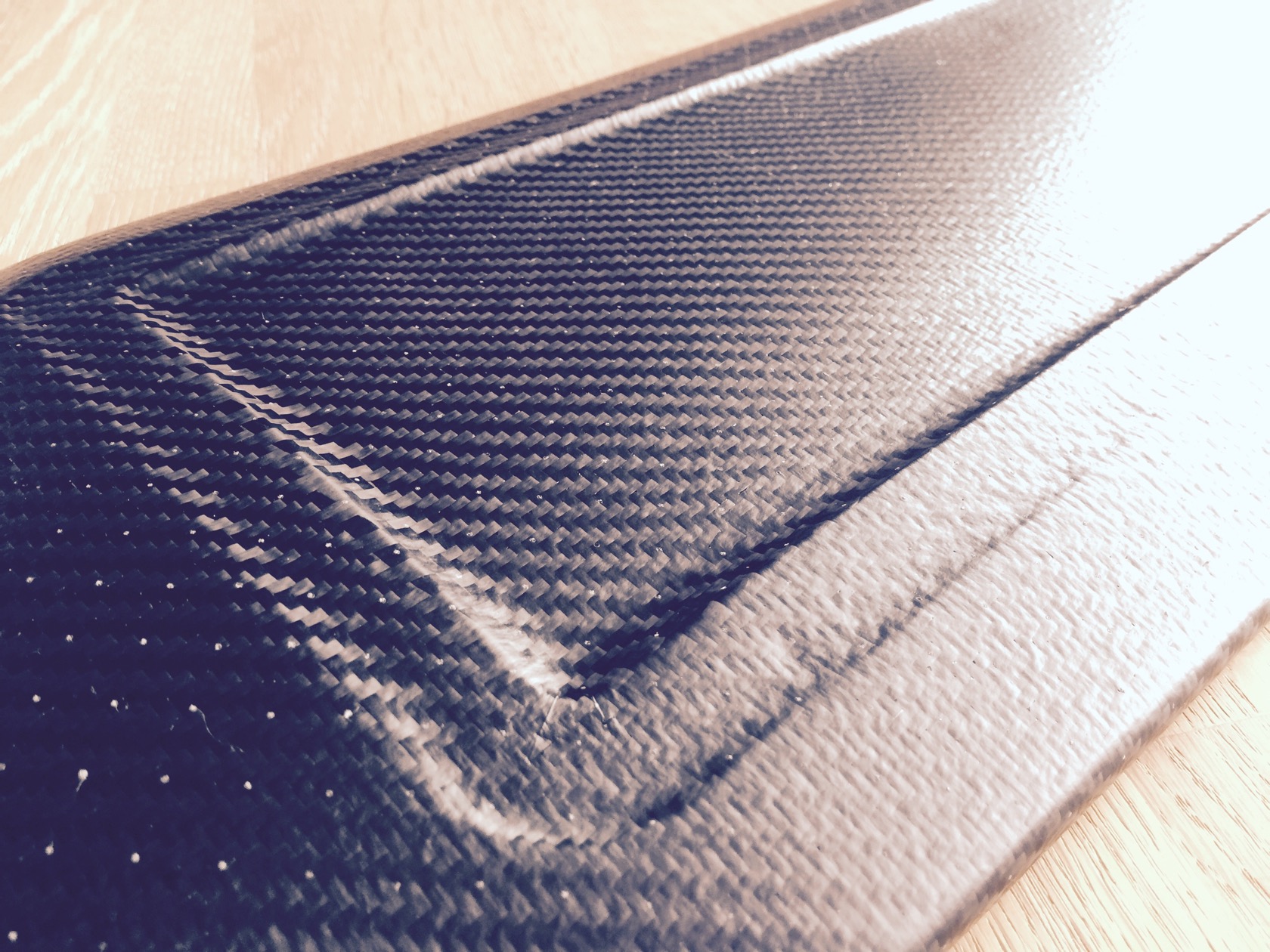
 this would be a mess for sanding, since from sanding heat, the resin becomes fluid again and then it clogs up your sand paper instantly. also I was super afraid of the screws - looked like the resin actually found its way through the inserted threads and came out on topside, seating the screws nicely.
this would be a mess for sanding, since from sanding heat, the resin becomes fluid again and then it clogs up your sand paper instantly. also I was super afraid of the screws - looked like the resin actually found its way through the inserted threads and came out on topside, seating the screws nicely. 
